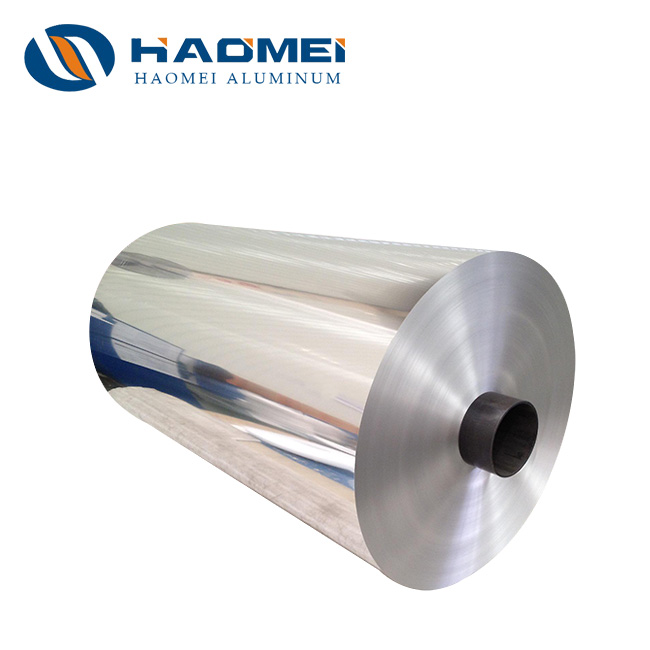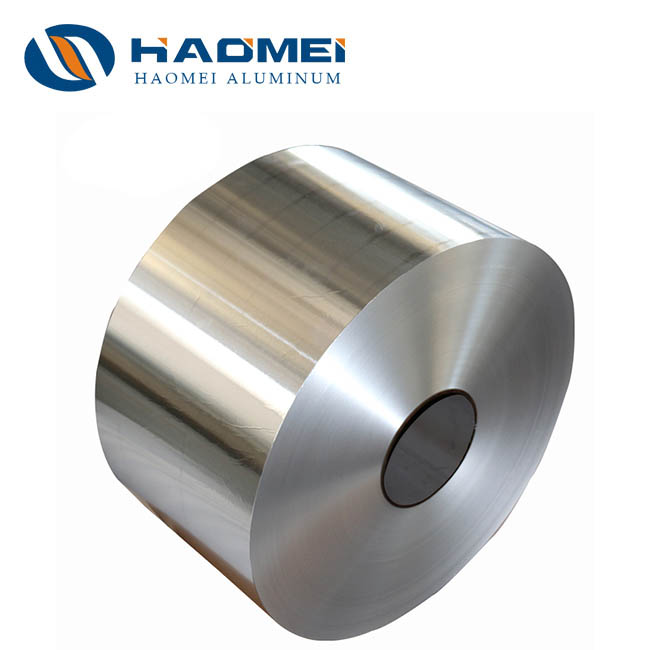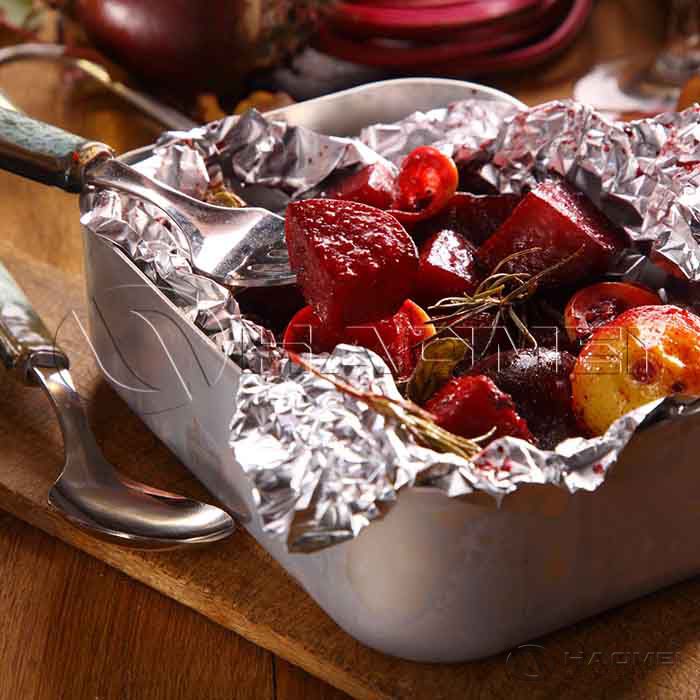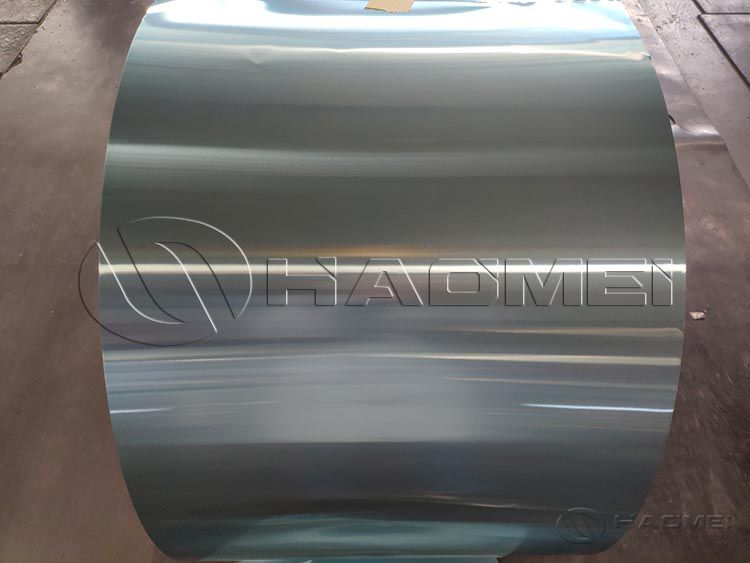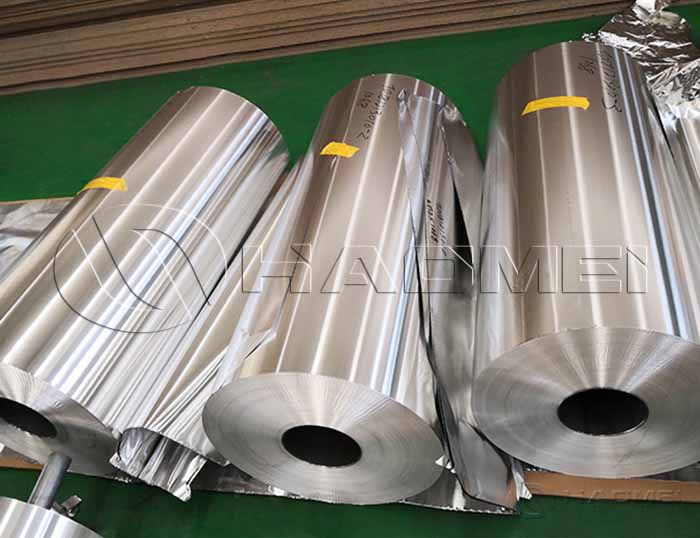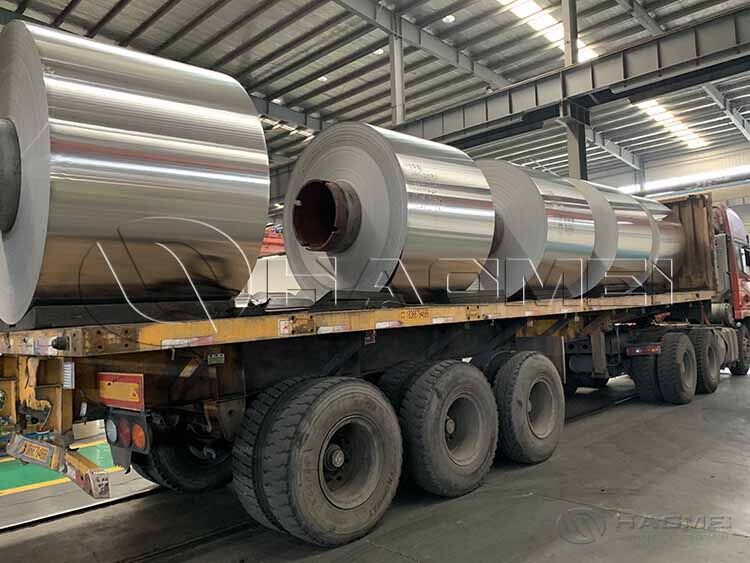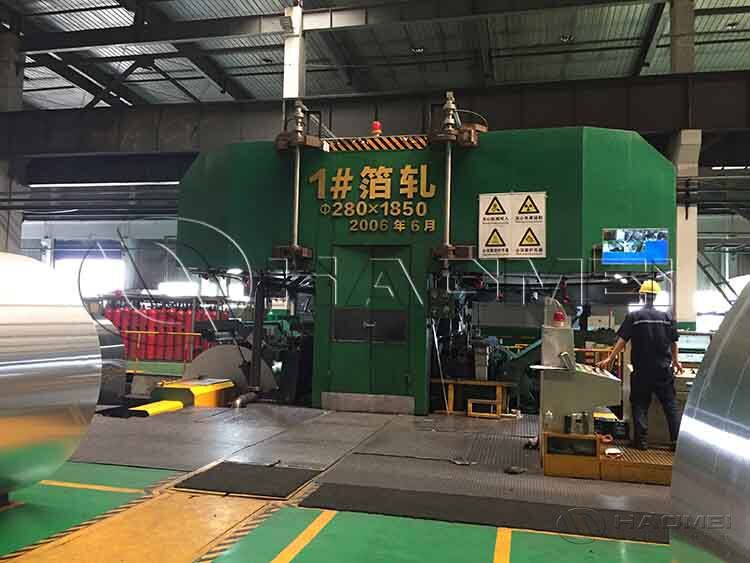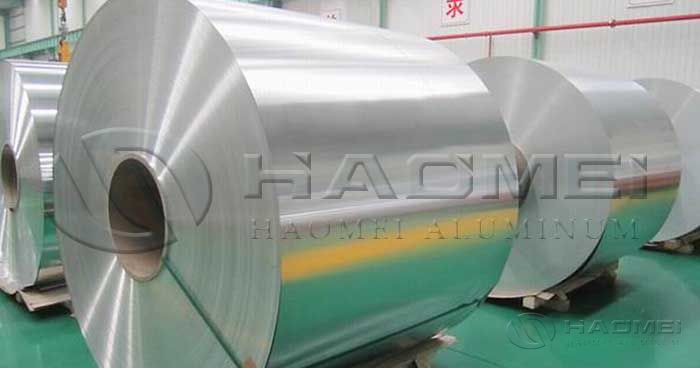How to Ensure Quality of Hydrophilic Aluminum Foil Tape for Air Conditioner
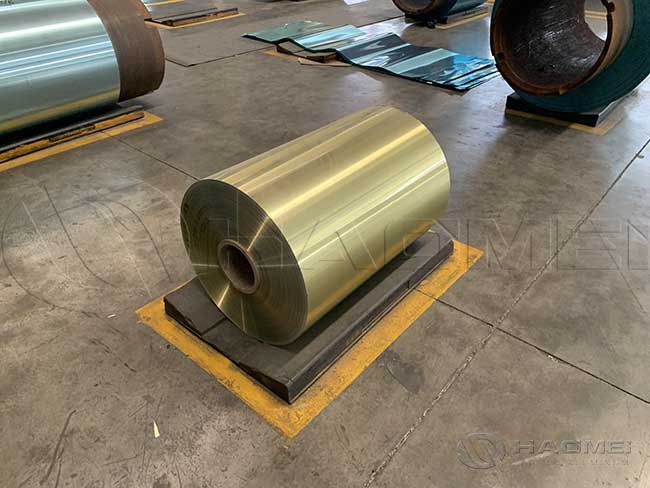
The quality of foil tape for air conditioner directly affects the performance of the air conditioner. How to improve hydrophilic aluminum foil performance? Learn more.
The air conditioner heat exchanger is an important part of the air conditioner, the performance of the heat exchanger directly affects the performance of the air conditioner, and aircon aluminum foil is an important material for the heat exchanger, so the quality of the foil tape for air conditioner directly affects the performance of the air conditioner. At the same time, the price-performance ratio of aluminum foil is also an important factor affecting the cost of air conditioners. Generally, two kinds of aluminum foil are used in heat exchangers of air conditioners, one is ordinary aluminum foil, and the other is hydrophilic aluminum foil.
Since the aluminum foil coated with a hydrophilic coating has a different affinity to water than ordinary aluminum foil, the heat exchange performance is also different. The surface of the hydrophilic aluminum foil has a strong affinity for water, and the condensed water diffuses quickly on the fins, and it is not easy to form a "water bridge". Therefore, the ventilation effect is good when the air conditioner is running, so the hydrophilic aluminum foil has better performance. How to improve the hydrophilicity of hydrophilic aluminum foil?

For hydrophilic aluminum foil, its performance is related to the pressure drop ratio, and the pressure drop ratio is related to the hydrophilic angle, so the hydrophilic angle is also an important factor in determining the performance of the material. The so-called pressure drop ratio refers to the ratio of the pressure difference before and after the flow of air at a certain flow rate in the wet state of the heat exchanger to the pressure difference before and after the flow of air at a certain flow rate in the dry state. The larger the pressure drop ratio, the greater the resistance to airflow through the heat exchanger.
The so-called hydrophilicity means that the surface of an object has a strong affinity for water and can be infiltrated. The angle formed by the liquid drop standing on the plane of aluminum foil is called the contact angle, which is called the hydrophilic angle here. The smaller the hydrophilic angle, the better the hydrophilicity; on the contrary, the larger the hydrophilic angle, the worse the hydrophilicity.
The hydrophilic angle is divided into the initial hydrophilic angle and the continuous hydrophilic angle. The initial hydrophilic angle refers to the hydrophilic angle measured by the hydrophilic coating of the aluminum foil before the heat exchanger is processed; the continuous hydrophilic angle is the measured hydrophilic angle of the hydrophilic aluminum foil after a certain process.
The factors affecting the hydrophilicity of the hydrophilic aluminum foil include the control of the coating composition, curing time, drying temperature and other factors. During the production of air conditioner aluminum foil, we need to pay attention to the choice of the fin oil and drying temperature.
With the widespread use of hydrophilic aluminum foil, the fin oil has gradually changed from the original non-volatile lubricating oil to the volatile fin oil. Among the technical indicators of fin oil, the two indicators related to hydrophilicity are viscosity and volatility. Through experiments, it is considered that volatile oil with a viscosity of 1.2-2.5 cSt is more suitable for the use of hydrophilic aluminum foil.
Drying temperature is also an important factor affecting hydrophilicity. If the drying temperature is too low, the fin oil cannot be volatilized cleanly, and the fin oil remaining on the fins is easy to form an oil film that affects the hydrophilicity of the hydrophilic aluminum foil. If the temperature is too high, it will destroy the hydrophilicity of the hydrophilic coating. For hydrophilic aluminum that uses volatile fin oil, the maximum drying temperature that does not affect the hydrophilicity is about 150 ℃. The drying time is 5-10min.
Inquiry
Products Category
Latest Application
-
 Why butter aluminum foil is neededButter aluminum foil blocks oxygen, moisture, and light, effectively preventing butter from oxidizing and spoiling, preserving nutrients, and significantly extending its shelf life. High-end products can see their sh
application
Why butter aluminum foil is neededButter aluminum foil blocks oxygen, moisture, and light, effectively preventing butter from oxidizing and spoiling, preserving nutrients, and significantly extending its shelf life. High-end products can see their sh
application
-
 Cables are usually composed of conductors, insulation layers, shielding layers, and sheaths. Aluminum foil for cable is generally located outside the insulation layer as part of the shielding layer. It fits tightly to the surface of the insulation la
application
Cables are usually composed of conductors, insulation layers, shielding layers, and sheaths. Aluminum foil for cable is generally located outside the insulation layer as part of the shielding layer. It fits tightly to the surface of the insulation la
application
-
Aluminum Gold Foil Paper For Chocolate Wrapping
 When is aluminum foil used for chocolate wrappingThe use of aluminium foil food for chocolate can be traced back to the early 20th century. In 1911, Swiss candy companies began to wrap chocolate with aluminum foil, gradually replacing the tin foil. T
application
When is aluminum foil used for chocolate wrappingThe use of aluminium foil food for chocolate can be traced back to the early 20th century. In 1911, Swiss candy companies began to wrap chocolate with aluminum foil, gradually replacing the tin foil. T
application
-
PVC Rigid Film and Aluminum Foil for Medicine Packaging
 Haomei Aluminum provides different types of aluminum foil and plastic rigid films like PTP aluminum foil, cold forming foil, tropical foil, PVC rigid film, PE/PET film,etc. Best Price! Inquire now.
application
Haomei Aluminum provides different types of aluminum foil and plastic rigid films like PTP aluminum foil, cold forming foil, tropical foil, PVC rigid film, PE/PET film,etc. Best Price! Inquire now.
application
-
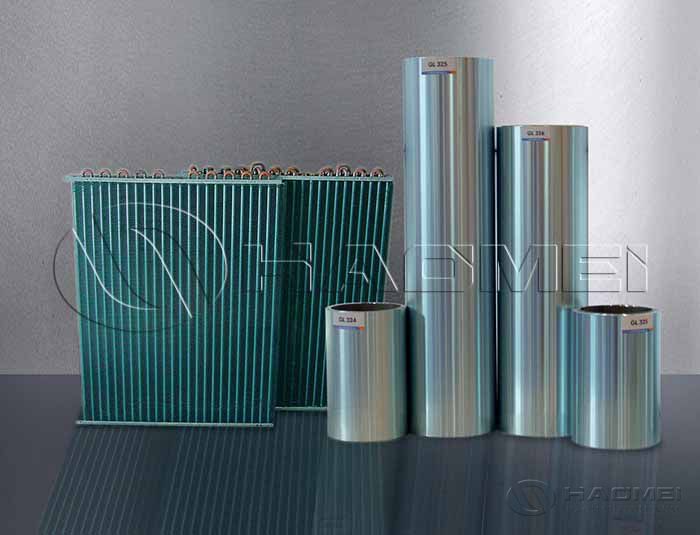 Haomei Aluminum offers you different colors of air conditioner aluminum foil like hydrophilic aluminum foil, including1100/ 3003 /8006/8011 aluminum foil,etc. Learn more.
application
Haomei Aluminum offers you different colors of air conditioner aluminum foil like hydrophilic aluminum foil, including1100/ 3003 /8006/8011 aluminum foil,etc. Learn more.
application
Latest Blog
-
Aluminum Foil for Pharmaceutical Packaging
 Aluminum foil pharmaceutical packaging, with its excellent barrier properties, sealing performance, and safety, has become one of the core materials for safeguarding drug quality. From common capsule and tablet packaging to specialized ointment and p
Blog
Aluminum foil pharmaceutical packaging, with its excellent barrier properties, sealing performance, and safety, has become one of the core materials for safeguarding drug quality. From common capsule and tablet packaging to specialized ointment and p
Blog
-
Aluminum or Tin Foil for Capacitor
 Among the core materials of capacitors, the choice of electrode metal foil is particularly crucial. When metal foil is mentioned, many people first think of tin foil, but in the capacitor manufacturing industry, capacitor aluminum foil has long been the a
Blog
Among the core materials of capacitors, the choice of electrode metal foil is particularly crucial. When metal foil is mentioned, many people first think of tin foil, but in the capacitor manufacturing industry, capacitor aluminum foil has long been the a
Blog
-
What Are Uses of Heavy Aluminum Foil
 Heavy aluminum foil is still a thin sheet material made of aluminum and aluminum alloys through rolling. According to industry standards, aluminum foil is usually classified based on thickness: aluminum foil with a thickness of less than 0.1 mm is ca
Blog
Heavy aluminum foil is still a thin sheet material made of aluminum and aluminum alloys through rolling. According to industry standards, aluminum foil is usually classified based on thickness: aluminum foil with a thickness of less than 0.1 mm is ca
Blog
-
Blister Packaging: Aluminum foil and PVDC PVC
 Opening a medicine box, the pills and capsules encased in transparent "bubbles" always give a sense of reassurance; opening a snack bag, individually wrapped candies and nuts are often hidden in similar packaging. This packaging format, which co
Blog
Opening a medicine box, the pills and capsules encased in transparent "bubbles" always give a sense of reassurance; opening a snack bag, individually wrapped candies and nuts are often hidden in similar packaging. This packaging format, which co
Blog
-
Heavy Duty Aluminum Foil For BBQ
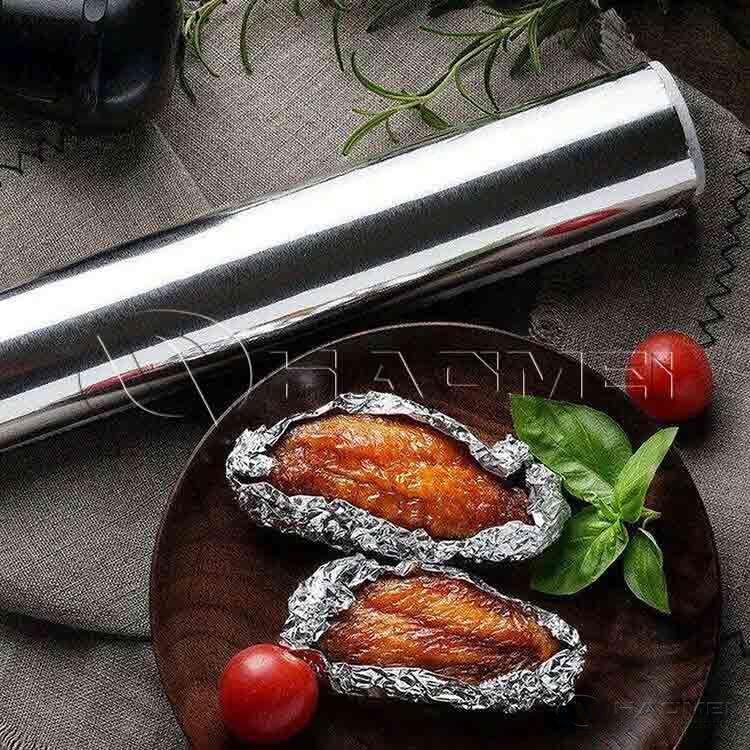 Many people think of aluminum foil as just a "wrapping tool," but in a barbecue setting, heavy duty catering foil offers much more than that; it acts as a "personal protective shield" and a "smart heat conductor" for the
Blog
Many people think of aluminum foil as just a "wrapping tool," but in a barbecue setting, heavy duty catering foil offers much more than that; it acts as a "personal protective shield" and a "smart heat conductor" for the
Blog

Haomei Aluminum CO., LTD.
Tel/Whatsapp: +86-15978414719
Email: sale@alumhm.com
Website: https://www.alumfoils.com
Xin'an Industrial Assemble Region,Luoyang,Henan Province,China
Office Add: 1103, No.14 Waihuan Road, CBD, Zhengzhou, China

